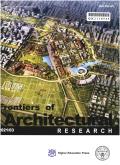Natural movement: Measuring optimal pathway configuration of museum layout and pedestrian accessibility through visibility graph analysis and intelligent agent simulation
IF 3.6
1区 艺术学
0 ARCHITECTURE
引用次数: 0
Abstract
This study explores the interaction between spatial configuration, natural mobility, and visual accessibility in exhibition spaces, an area that remains underexplored. By integrating visibility graph analysis (VGA), intelligent agent simulation (IAS), topological analysis, and field observation, the research examines functional layout and accessibility across four museums. Findings indicate that corridors and pathways, second only to exhibition halls, play a crucial role in spatial mobility. Composite layouts (e.g., circular and L-shaped designs) exhibit superior mean depth and integration, yet connectivity and mean depth demonstrate a nonlinear relationship. Elongated or complex path turns increase cognitive load, complicating navigation, while open passageways promote smoother visitor distribution. Topological analysis effectively identifies optimal nodes, key locations, and path-turn efficiency under accessibility constraints. Visitor dwell time is shaped not only by exhibit content but also by spatial location, entry sequence, and visitor density. Results support the assumption that space syntax models align with real-world visitor flow patterns, yet predictive models fail to fully capture variations in mobility across different timeframes and behavioral contexts. These insights contribute to optimizing museum design for improved visitor experience and spatial efficiency.
自然运动:通过可视化图分析和智能体仿真,测量博物馆布局的最优路径配置和行人可达性
本研究探讨了展览空间中空间结构、自然流动性和视觉可达性之间的相互作用,这是一个尚未得到充分探索的领域。通过可视化图分析(VGA)、智能体模拟(IAS)、拓扑分析和实地观察,研究了四个博物馆的功能布局和可达性。研究结果表明,走廊和通道在空间流动性中发挥着仅次于展厅的重要作用。复合布局(如圆形和l形设计)表现出优越的平均深度和集成度,但连通性和平均深度表现出非线性关系。细长或复杂的路径转弯增加了认知负荷,使导航复杂化,而开放的通道促进了游客更顺畅的分布。拓扑分析可以有效识别可达性约束下的最优节点、关键位置和路径转换效率。游客停留时间不仅受展览内容的影响,还受空间位置、进入顺序和游客密度的影响。研究结果支持空间语法模型与现实世界游客流量模式一致的假设,但预测模型未能完全捕捉到不同时间框架和行为背景下的流动性变化。这些见解有助于优化博物馆设计,以改善游客体验和空间效率。
本文章由计算机程序翻译,如有差异,请以英文原文为准。
求助全文
约1分钟内获得全文
求助全文
来源期刊

Frontiers of Architectural Research
ARCHITECTURE-
CiteScore
6.20
自引率
2.90%
发文量
430
审稿时长
30 weeks
期刊介绍:
Frontiers of Architectural Research is an international journal that publishes original research papers, review articles, and case studies to promote rapid communication and exchange among scholars, architects, and engineers. This journal introduces and reviews significant and pioneering achievements in the field of architecture research. Subject areas include the primary branches of architecture, such as architectural design and theory, architectural science and technology, urban planning, landscaping architecture, existing building renovation, and architectural heritage conservation. The journal encourages studies based on a rigorous scientific approach and state-of-the-art technology. All published papers reflect original research works and basic theories, models, computing, and design in architecture. High-quality papers addressing the social aspects of architecture are also welcome. This journal is strictly peer-reviewed and accepts only original manuscripts submitted in English.
 求助内容:
求助内容: 应助结果提醒方式:
应助结果提醒方式:


